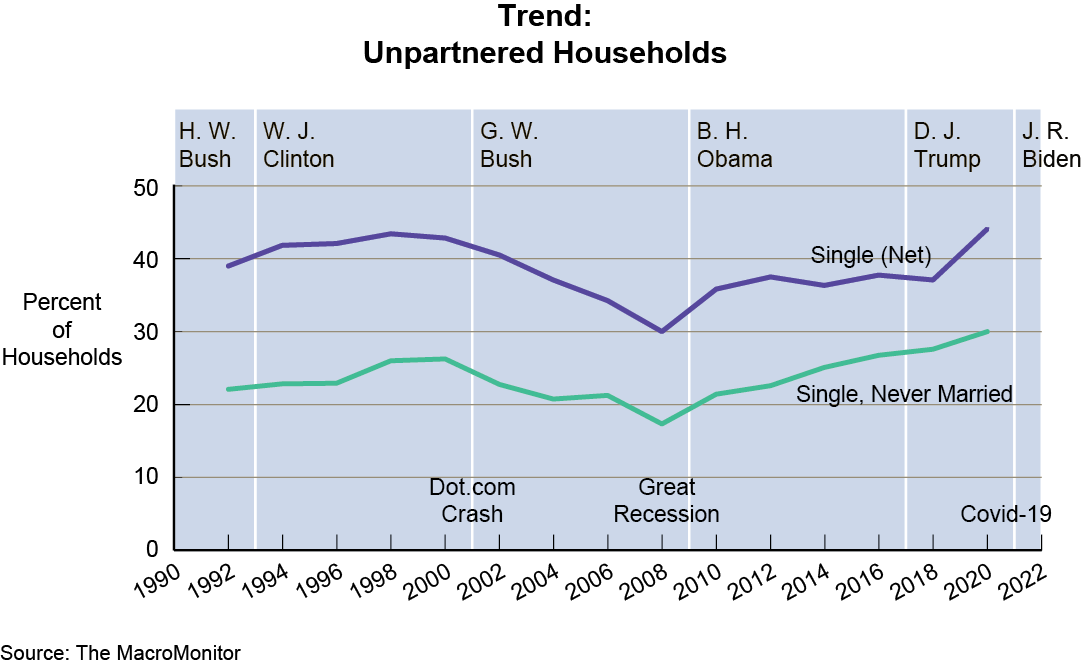Trends Newsletter November 2021
If you would like more information about this topic, please contact us.
Unpartnered

The word single has evolved to the word unpartnered when referring to individuals living without a romantic partner. Unpartnered adults could be single (never married), divorced, separated, or widowed. There are a number of meaningful ways to parse the Unpartnered population. For purposes of initiating a discussion, the segment in this newsletter is confined to household heads between the ages of 25 and 54 (prime working age adults). The incidence of Unpartnered heads (any single head and single, never-married heads) reflects societal changes as well as economic realities of the past thirty years (1990–2020).
As the incidence of Unpartnered heads increases, the incidence of married (and cohabiting) households decreases; for example, a decline in just two years from 49% in 2018 to 40% in 2020. Covid has wreaked havoc on the dating scene. The pandemic, however, is not the only reason Unpartnered rates are increasing.

Further exploring the data by gender and education provides important insights as to why the Unpartnered trend is highly unlikely to reverse. College-educated women now outnumber college-educated men, and although college women remain underpaid in comparison to men, many of these women earn enough to support themselves comfortably—most college-educated women no longer need a man to support them, and only a few elect to marry a man they need to support. Typically, today's educated women look for partners with equal earning power who are willing to share equally in caregiving chores. Increasingly, finding a partner of the same political tribe has replaced a partner preference for the same religion or ethnic group. Conversely, many men without a college degree (and with no trade) are experiencing a challenging time attracting a mate. More of today's college-educated women find fulfilling, mentally and emotionally healthy lives without a two-legged partner.
On a more optimistic note (for traditionalists): Following a two-year pandemic-induced lull, The Wedding Report forecasts that 2.5 million couples will marry in 2022. Look for new partnering developments in the 2022–23 MacroMonitor.
Unpartnered households deserve your attention. Although their needs are more modest than the needs of married households, and especially those of married households with children, their disposable incomes are often higher. There is a definite opportunity for financial-services providers if you can crack the nut of understanding what younger, educated women want and need, and how they want it served.
Both broad thinking (a macro-view) integrated with data (a micro-view) are necessary. The MacroMonitor provides both—precisely the tool you need. As we enter a post-pandemic society, consider a subscription to the MacroMonitor. No other source has as much information about the financial needs, behaviors, and attitudes of US households; longitudinal data are from 2000 to present, so that you can see trends from before the pandemic.
A MacroMonitor subscription is an easy decision to make because the study provides genuine value and insight into all area of financial services.
Additional deliverables are available to MacroMonitor subscribers:
- The November 2021 Stories: Two Single-Headed Households
- The underlying set of data for this month's Stories (by request)
What are your needs? Clients can let us know during one of their regularly-scheduled periodic calls. Let us hear from you. We listen!